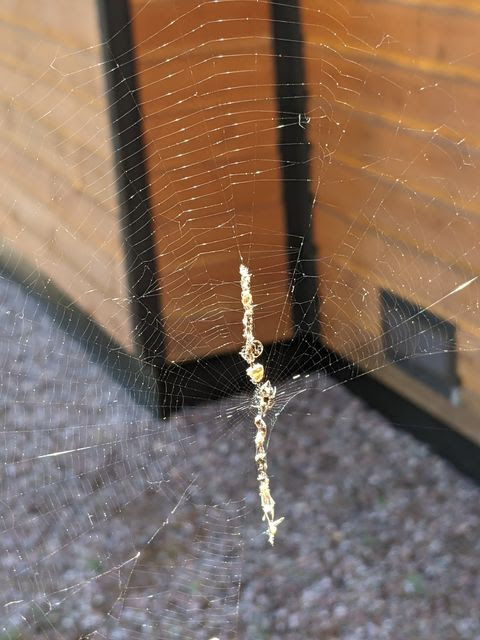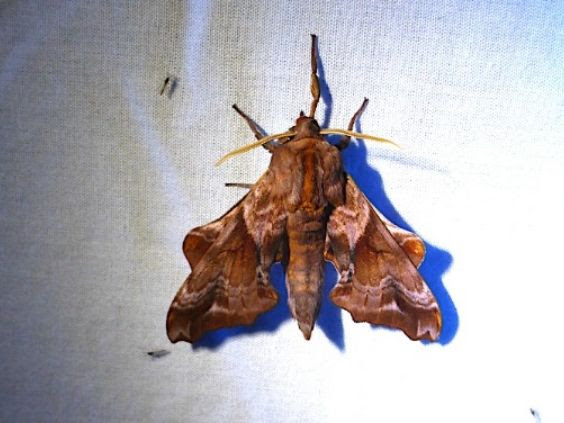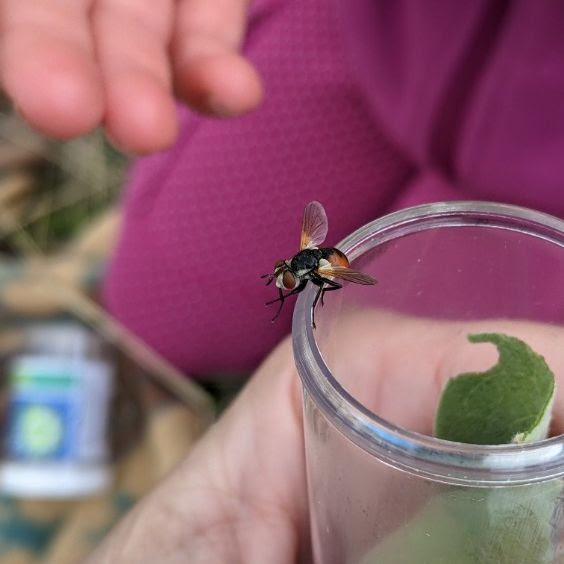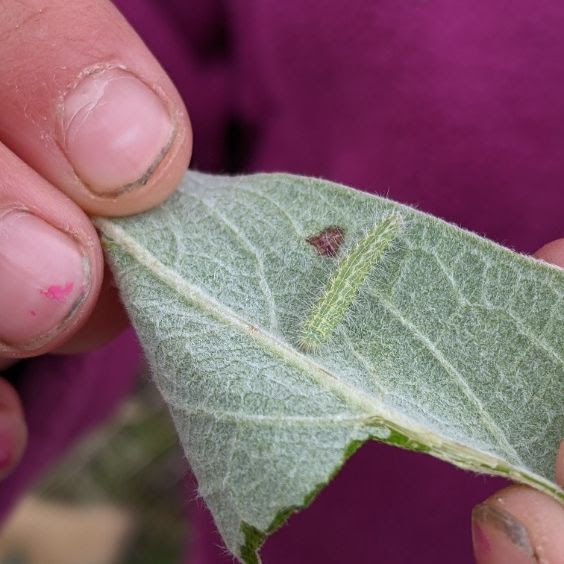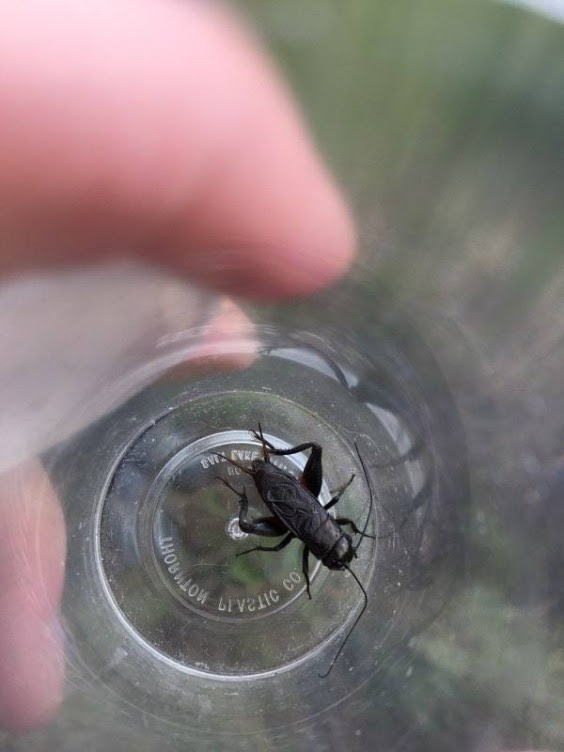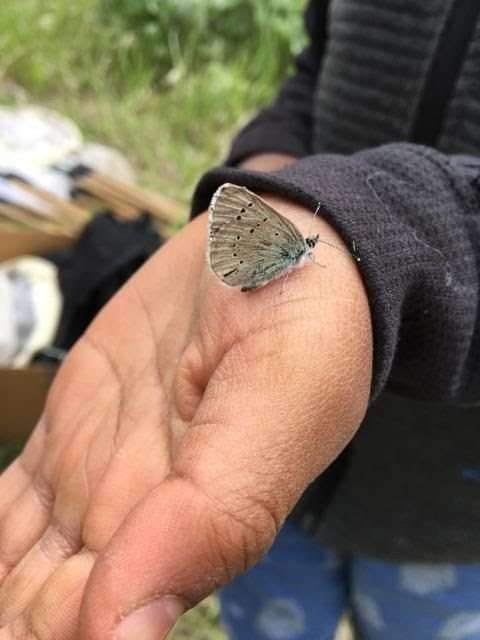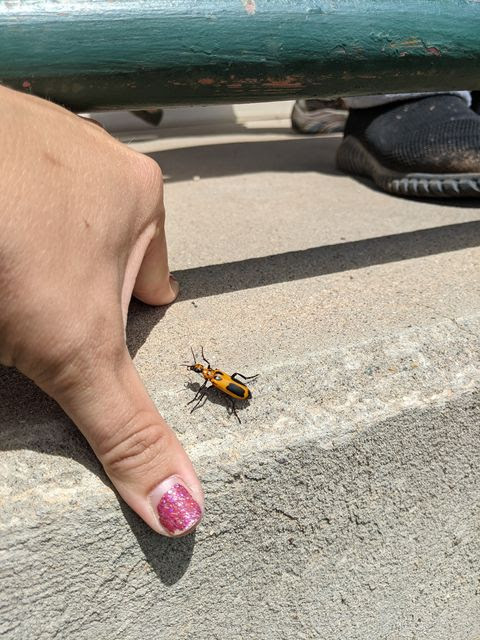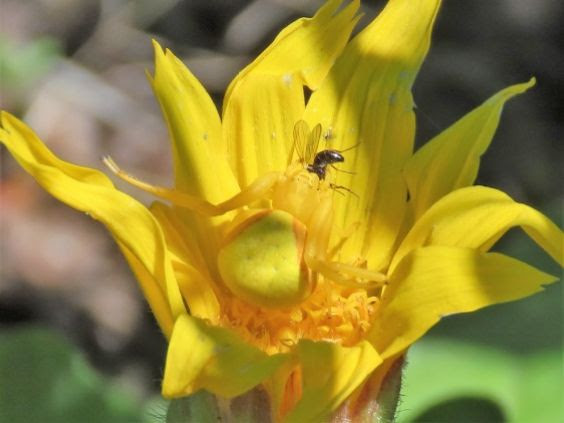Trashline orbweaver spiders get their common name because they’re not the tidiest of spiders, decorating their web with a line of debris (prey remains, plant material, etc.). This “mess” helps […]
Read MoreArticles by: Butterfly House
Notes from the Lab: Celebrity Bugs, Part 2
Welcome Back to the Lab! Call the paparazzi and break out your VIP pass, it’s time for Celebrity Bugs, Part 2: Musician Edition! (With a surprise guest appearance at the end!) Kaikaia […]
Read MoreSmall-eyed Sphinx Moth (Paonias myops)
The name of this sphinx moth is a bit misleading. The moth has normal eyes, not small at all, but the eyelike spots on the hindwings could be considered small. These handsome […]
Read MoreTachinid Fly (genus Gymnosoma)
Tachinid flies are mostly robust flies with spiny abdomens. This group lacks spines on the abdomen, with Gymnosoma meaning “naked body.” Adults sip nectar from flowers, but larvae prefer protein. Of the […]
Read MorePlume Moth Larva (family Pterophoridae)
We believe this is a plume moth caterpillar, a distinctive group of moths that look like a capital “T” or like a glider at rest. Caterpillars are hairy or bristly, various […]
Read MoreSpring Field Cricket (Gryllus veletis)
Spring field crickets are the most common black cricket with a slowish chirp in the spring in many regions—ranging roughly through the northern half of the US. After overwintering as nymphs, […]
Read MoreSilvery Blue (Glaucopsyche lygdamus)
The Silvery Blue is on the wing from May into mid June and has prominent rows of black spots circled in white on each wing. It can potentially be confused […]
Read MoreYellow-crescent Blister Beetle (Pyrota insulata)
Thank you to Alexis and the students at Spring Creek School for sharing photos of this colorful beetle (and for tuning into the Online Bug Encounter each week!). We’re glad […]
Read MoreGoldenrod Crab Spider (Misumena vatia)
We were so focused on seeing what was “trying to pollinate the flower” that we initially did not notice the spider. Goldenrod Crab spiders are masters at blending in. These spiders can change […]
Read MoreA Leaf Beetle (Scelolyperus shwarzii)
We believe these tiny (4-6mm long) beetles are Scelolyperus schwarzii. The penstemon gives you a good idea of their size. The two that are in full view are likely males, as […]
Read More